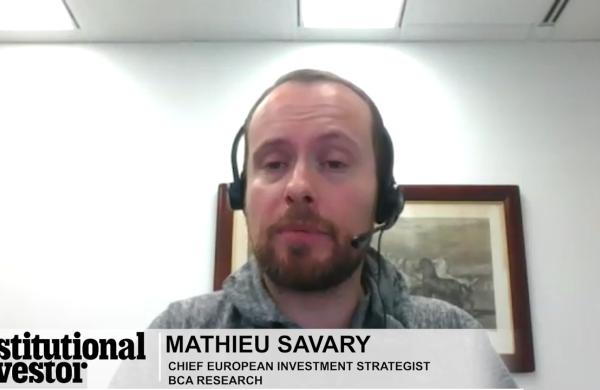Nine months after the collapse of the stock market hardly seemed a propitious time to launch a new money management firm -- especially when its first product was a global technology fund. But Brian Ashford-Russell made this contrarian bet in January 2001. His start-up, London-based Polar Capital Partners, is now a thriving boutique, with $2.15 billion under management.
"The business plan I sold was to create a specialist investment boutique with multiple areas of expertise," says Ashford-Russell, who has been managing technology portfolios since the mid-1980s.
With 29 investment professionals on staff, Polar runs $700 million in hedge funds and the balance in long-only funds. Global technology funds -- long only and long-short -- hold $850 million; $700 million is in Japanese equity portfolios and $600 million in various U.K. and European products.
But Ashford-Russell, 45, says he's just getting started. Within the next five years or so, he hopes to manage as many as a dozen different product areas and to more than double total assets. "If you have ten or 12 business lines growing at 10 to 15 percent a year, you have a very nice overall business," says the confident CEO.
At Polar Capital all business units are structured as joint ventures between Polar and the individual managers overseeing the funds. Each manager has his own profit-and-loss account and receives a portion of the profits generated by the management and performance fees. Under a predetermined formula managers also accumulate equity in their own units, which, after several years, can be converted into shares of Polar Capital.
"Portfolio managers can come here and essentially set up a virtual company over which they have substantial management control," says Ashford-Russell. "Their remuneration is then tied to the performance of their business unit, which in turn aligns their interests with those of Polar and the investors in the funds."
Robert Burdett, co-head of funds-of-funds investment at Credit Suisse Asset Management in London, likes the approach. "We are big believers in manager-owned boutiques," he says. "That's one reason Polar Japan has been part of Credit Suisse's Constellation portfolio [a £350 million ($636 million) fund of funds] from the very start."
Under this setup, portfolio managers focus on running money, while Polar handles marketing, administration and all other back-office necessities. Says Ashford-Russell: "The one advantage of working for a large institution is knowing that all the dull stuff is taken care of and, more importantly, that you can enjoy the collegiate atmosphere of being surrounded by smart people. We can offer that and at the same time take away all the bureaucracy, the politics and the constant pressure to manage more and more money."
At the end of February, Polar's U.K. market-neutral hedge fund was up 33 percent from its November 2001 launch. Polar Capital Japan (long only) was up 19 percent from its October 2001 launch, versus a 3 percent rise in the Topix index.
After earning his degree in philosophy, politics and economics at the University of Oxford's Brasenose College in 1979, Ashford-Russell took a job as an analyst at London-based money manager Touche Remnant & Co., acquired by Henderson Global Investors in 1992. Beginning in 1984 Ashford-Russell ran Global Technology Trust, Touche Remnant's, and then Henderson's, flagship fund. Between 1984 and the end of 2003, it returned an average annual 21.5 percent, versus 8.5 percent for the FTSE 100.
As tech stocks soared, assets at Henderson Global Technology Trust, and its offshore equivalent, Henderson Horizon Global Technology, leaped from £220 million in 1998 to more than £2.2 billion in 2000. The share price of Henderson, which trades on the London Stock Exchange, rose from 80 pence in 1998 to a peak of more than £5 in June 2000. (It recently traded at 164 pence.)
Ashford-Russell saw grave dangers in the '90s bull market, warning his trust's shareholders in its 1999 annual report that valuations were unsustainable. He received a torrent of abuse. "I got letters from shareholders, from brokers, from independent financial advisers telling me it was not my job to talk down the share price of the trust," says Ashford-Russell. "It really was a very odd time."
Still, Henderson was less manic than most. While tech specialists like Aberdeen Asset Management launched new tech funds into 2000, Henderson introduced no new funds and issued no new shares. "We avoided the excesses," says Ashford-Russell. "In hindsight the smartest thing to do would have been to wind the trust up and return the money to shareholders. That would have been a very bold step for any commercial organization to take."
In September 2000, Ashford-Russell decided to leave.
Soon after New Year's 2001, he opened Polar Capital, which he owns with the other managers and Caledonian Investments, which controls a 24.6 percent ownership stake. Caledonian is the investment vehicle of the Cayzer family, which made its fortune in shipping. The current head of the clan, Sir James Cayzer, 72, was in the news recently when he survived a gun attack in Paris.
In March 2001 the directors of the Henderson Global Technology Trust took the unusual step of moving the trust's assets, which then totaled $640 million, to the new manager. Says J. David Rhodes, executive chairman of U.K. semiconductor company Filtronic and a director of the trust: "As a board, we were very clear that the performance of the trust was due to Brian and his team. We had no hesitation moving the management contract when Brian set up Polar. It was clearly in the best interests of all shareholders."
Although tech stocks remain a hard sell with investors, many independent financial advisers have stuck with Ashford-Russell. Says Stephen Marriott, a fund analyst at London-based IFA Bestinvest: "If clients want exposure to tech, we would have no hesitation recommending Polar Capital. The track record sells itself."





